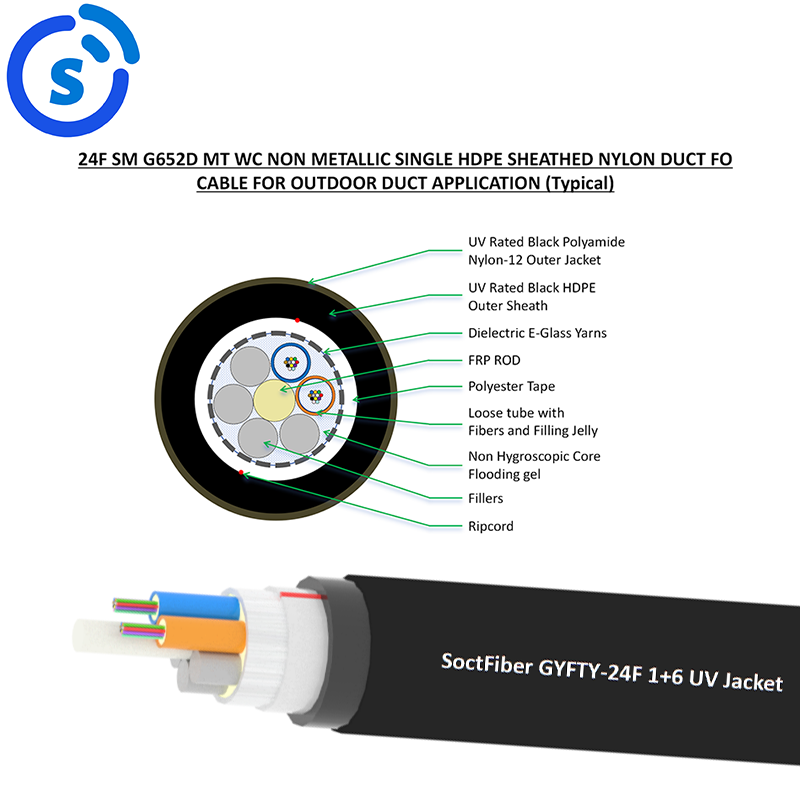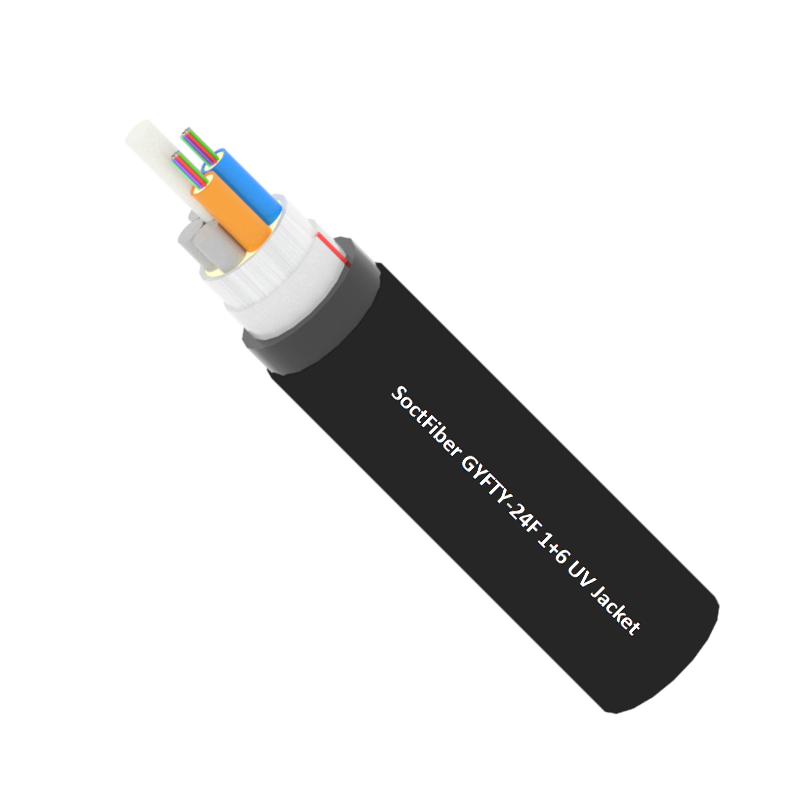High Initial Cost of Fiber Optic Cable Installation
Material Expenses Compared to Traditional Copper Cables
Fiber optics cables (which are characterised by advanced technology) typically have a higher cost of materials than typical copper cables. That’s mainly because fiber optics rely on silica or glass, which automatically costs more than the metals of copper wires. The National Telecommunications and Information Administration (NTIA) reports that fiber optic material construction costs can be three times higher than the cost of copper alternatives, which can place a significant limit on budget when outlining infrastructure projects. Although the initial cost may seem steep, it’s important to know the full cost of materials including installation. While fiber optic cables do initially cost more, they perform better and can provide valuable service over time.
Labor and Infrastructure Investment
Setting up fiber optics requires specialists, which means that labor costs are much more expensive than the installation of traditional electrical infrastructure. Reports in the industry suggest that the labor cost for fiber optic installs may be 20-30% greater than for copper cabling due to the expertise and attention to detail involved in working with these thin cables. Also, a deployment of a system of optical fibres requires that the current infrastructure be inspected to ensure compatibility, possibly requiring a new investment for updating or to be restructured in order to support the new communication requirements. This comprehensive strategy is more expensive initially, but it ensures a reliable and effective system in the long-run.
Long-Term Cost-Benefit Analysis
Bit the bullet on the cost of fiber cable installations, know it will pay off in the long run. Fiber optics typically also involve lower maintenance and operational costs that are associated with lower signal loss and power consumption. For example, one case study across multiple cities found that when municipalities switched to fiber optics the number of network outages decreased by 50%, which leads to cost savings over time. And one has to do total cost and benefits analysis, which takes the short term cost into consideration, but also the long term benefits in terms of life-cycle costs of the infrastructure. This tactic gives businesses seeking to invest in fiber optic technology confidence with clarity in their decision making.
Fragility and Susceptibility to Physical Damage
Fiber optic cables are touted for their advanced data transmission capabilities, but they are also more susceptible to physical damage. This makes understanding and navigating their fragility a key aspect of their use.
Vulnerability to Bending and Twisting
The cables fiber optic are very sensitve to kinking and twisting and are easily damaged.Copper XS technology has been around for years, it doesn't apply to fiber optics cable. Experts strongly recommend not bending these cables past a certain bend radius, which can effect signal loss or worse, physical breaking of the cable. Following the proper installation process is the key to minimizing any stress points in the fiber optic installation. Incorrect cable termination is the cause of many failures and unfortunately outside plant failure rates can be high (30% by some estimates) and noise on cable terminations alone can contribute to a 5% loss in test accuracy. It is important to be aware of and accommodating to the material limitations and constraints of these cabling types in order to preserve their structural and operating capabilities.
Environmental Factors Affecting Durability
Fiber optic cables are also subject to being damaged by environmental conditions, including temperature extremities, moisture, and exposure to UV radiation. Manufacturers may specify ratings and distances between different kind of cables but actual life is dangerous enough. These cables are furtherally subjected to the contact with environmental elements which tend to hasten the degradation of the cable in the absence of protecting itself, and for instance, under the use of protective ducting. The industry data supports the importance to take into account the site environment, because imprecise site surveys are associated with a higher failure risk in fiber optical installations. It is very important to properly analyze environmental effects if the fiber-optic system is to last and reliably perform.
Installation Challenges in Older Infrastructure
Retrofitting Limitations in Non-Fiber-Ready Buildings
Upgrading older buildings to handle fiber optic cables is challenging because they do not have the necessary infrastructure. Most existing buildings were not built with fiber optic cables in place – a significant impediment to modernizing infrastructure. To convert these, in many cases you would need to do extensive structuralfwork, which typically will add a lot ofcost to the project and time. For example, results of a survey of business properties finds that nearly forty percent of older buildings require costly modifications for accommodating the fiber optic systems. This need for retrofitting indicates the challenge and the cost now associated with moving older buildings to modern communications like fiber optic cable.
Custom Solutions and Added Expenses
In old infrastructure, it is that the custom solution of fiber optic cables integration is required that increases the cost. Such customized solutions are not nibbed solutions, such customized solutions are also additional design and engineering work to provide support for the current architecture of the payment terminals and thus are costly projects. Solutions are for example special connectors and protective conduits to protect the installation in locations which were not originally equipped for fiber optic cables. That financial reasoning, however, means that custom installations can raise overall project costs as much as 20% over standard deployments. This underscores the need to do a complete cost-benefit analysis before implementing such measures, particularly in older homes where retrofitting is required.
Specialized Equipment and Technical Expertise Requirements
Need for Advanced Installation Tools
Special tools and equipment are required for the installation of fiber optic cables which represents a cost barrier when they are not already in use. Fusion splicers, optical power meters, etc., are essential for a good installation and best testing of the fiber optic systems. These tools may be seen as obstacles to entry by companies which are not already familiar with fiber optic installations, as all such companies must also bear the cost of deployment of these devices. According to a major telecom report, some companies may soon be asked to fork over as much as $50k for a complete fiber install kit. This is particularly challenging for businesses who are looking to move from their traditional copper cables to more superior fiber optic systems, which not only claim to deliver better data transmission but also demand a large outlay of cost in the beginning.
Training and Certification Demands
Workers that have to put in fiber optic wires must have certain training and accreditation, which also complicates operations. Educational training and certification is a must so that companies can be assured of the safety and quality of the installation. While these programs are growing due to the demand growth for fiber optic systems, the investment is significant. And new information is suggesting that it can cost companies in excess of $5,000 per tech to get a tech to an acceptable level of skill for fiber installation. “It is a major investment in human capital, an investment that may lead some businesses to avoid working in the fiber optics space despite the long-term performance and reliability advantages that come from doing so.

Complex Repairs and Maintenance Demands
Difficulty in Locating Cable Breaks
Fiber optic cable breaks are more difficult to find than traditional wiring and can result in long downtime for repairs. The procedure is that such delicate testing equipment is needed for the miniaturized detecting to allow for such precise point of troubles, and it is more difficult for maintaining the equipment. Whereas, fiber optic cables require specific tools, such as optical time-domain reflectometers (OTDR), to pinpoint breakage locations efficiently. To make matters worse, there’s data to suggest that outages caused by the breakage of the fiber is potentially 60% longer than that caused by the breakage of copper. This prolonged period of inactivity can be a major disuption to your operation, so it is important to understand these nuances very well.
Downtime and Labor Costs During Repairs
Repairing fiber links is typically very not cost effective, because of the skilled labor needed and cost during out time. One well documented study found that Fiber repairs may last two to three times longer than copper cable repairs, leading to more extended service interruptions. Organizations will need to factor in these potential costs when budgeting, because over and above costs, medium size (or smaller) outages will translate in a loss of about $500 per lost hour at the organizational level. “By incorporating these considerations into our strategic planning, we can better prepare for and lessen the financial consequences of potential, sudden maintenance needs of fiber optic repairs.
FAQ
Why are fiber optic cables more costly than copper cables?
Fiber optic cables are made of materials like silica or glass, which are more expensive than the metals used in copper cables. This, along with the high demand for advanced technology, results in higher costs.
What are the benefits of investing in fiber optic technology despite the high initial costs?
Investing in fiber optics offers long-term benefits like lower maintenance costs, reduced signal degradation, and increased energy efficiency, which can offset the initial expenses over time.
How does the environment affect the durability of fiber optic cables?
Environmental factors such as extreme temperatures, moisture, and UV exposure can compromise fiber optic cable durability. It is essential to implement protective measures like conduits to safeguard them against these elements.
What are the challenges in retrofitting older buildings for fiber optic installations?
Retrofitting older buildings can be challenging due to a lack of existing infrastructure, requiring extensive construction work and custom solutions, which can significantly increase project costs.
Why is training important for technicians working with fiber optics?
Since fiber optics require specialized handling, technicians must undergo specific training and certification to ensure the safety and quality of installations, adding to the operational costs for businesses.
Table of Contents
- High Initial Cost of Fiber Optic Cable Installation
- Fragility and Susceptibility to Physical Damage
- Installation Challenges in Older Infrastructure
- Specialized Equipment and Technical Expertise Requirements
- Complex Repairs and Maintenance Demands
-
FAQ
- Why are fiber optic cables more costly than copper cables?
- What are the benefits of investing in fiber optic technology despite the high initial costs?
- How does the environment affect the durability of fiber optic cables?
- What are the challenges in retrofitting older buildings for fiber optic installations?
- Why is training important for technicians working with fiber optics?

